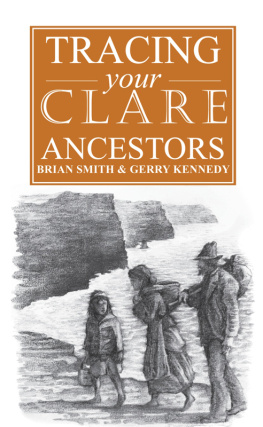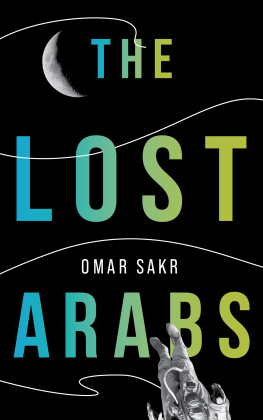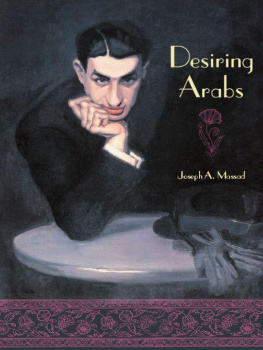ROUTLEDGE LIBRARY EDITIONS:
POLITICS OF THE MIDDLE EAST
Volume 4
THE ARABS AND THE WEST
The Arabs and the West
Clare Hollingworth
First published in 1952 by Methuen & Co Ltd
This edition first published in 2016
by Routledge
2 Park Square, Milton Park, Abingdon, Oxon OX14 4RN
and by Routledge
711 Third Avenue, New York, NY 10017
Routledge is an imprint of the Taylor & Francis Group, an informa business
1952 Clare Hollingworth
All rights reserved. No part of this book may be reprinted or reproduced or utilised in any form or by any electronic, mechanical, or other means, now known or hereafter invented, including photocopying and recording, or in any information storage or retrieval system, without permission in writing from the publishers.
Trademark notice : Product or corporate names may be trademarks or registered trademarks, and are used only for identification and explanation without intent to infringe.
British Library Cataloguing in Publication Data
A catalogue record for this book is available from the British Library
ISBN: 978-1-138-83939-7 (Set)
ISBN: 978-1-315-68049-1 (Set) (ebk)
ISBN: 978-1-138-92204-4 (Volume 4) (hbk)
ISBN: 978-1-315-68606-6 (Volume 4) (ebk)
Publisher's Note
The publisher has gone to great lengths to ensure the quality of this reprint but points out that some imperfections in the original copies may be apparent.
Disclaimer
The publisher has made every effort to trace copyright holders and would welcome correspondence from those they have been unable to trace.
THE ARABS
AND THE WEST
by
CLARE HOLLINGWORTH
With 8 Maps
First published in 1952
1.1
CATALOGUE NO. 5405/U
PRINTED IN GREAT BRITAIN
To G.S.H.
whose deep knowledge and fine judgment of events in the Middle East have been invaluable.
Preface
MY experiences in the Middle East between 1940 and 1950 convinced me that there was an urgent need for a book which would supply the basic facts and also the general background which the ordinary reader would need in any attempt to understand the political and economic complexities of that region.
This book was written in Paris in 1951, but it is the product of a decade of work which took me into Turkey, Syria, the Lebanon, Egypt, Iraq, Palestine, Persia, Libya, the Persian Gulf, and Saudi Arabia.
My original plan was to produce a simple post-war history of the area as an introduction to a more detailed analysis of relations between the Arabs and the Western world. This project was dropped because I discovered that it would require several volumes and would, in the end, be of little value to readers seeking a digestible but comprehensive account of what happened and what is happening in a region which is coming more and more forcibly into the news.
The first section of this book outlines those events in the Middle East between the end of the first world war and the outbreak of the Palestine war which had a marked influence upon either the countries concerned or the general relations between the Arab world and the Western Powers.
The second section deals with the Palestine war of which the true significance seems rarely to be appreciated; in no respect is this failure more marked than in the influence it had upon the relations between the Arabs and the West.
In the third section I discuss the effects the Palestine dispute had upon the political and economic development of the Arab countries, as well as upon the new problem of the defence of the area against aggression from the East. I have also attempted to outline the history of the Middle East up to the end of 1951.
I had hoped that a three-month visit to this fast-changing part of the world early in 1952 would enable me to write a nicely rounded epilogue, bringing the book more or less up to date. Events continue to move at such a truly astonishing pace that any effort to keep up with them is vain: this section of the 'never-changing East' now changes almost daily.
I can find no better introduction to this work than a quotation from Elizabeth Monroe's The Mediterranean in Politics, where she writes:
'Scholars may feel that I could have done them better service by publishing footnotes and tables, or by writing in greater detail.... My answer to them is that I have not neglected research. The light book, if it is to be accurate, demands long reflection upon the facts and figures which would fill the pages of a larger study. I have not set out these statistics and technicalities because I have thought it more important to try and write a book for ordinary people.'
I have also avoided footnotes except where, it being impossible for technical reasons to rewrite in proof, it was essential to note vital changes which have occurred since the book was written, e.g. in the chapter on Egypt.
My deep gratitude is due to those people, Arabs, Jews, British, American, and French, who have so generously and with such warm hospitality shared their learning and their knowledge with me. I wish also to thank the Editor of The Economist for permission to reproduce seven maps which originally appeared in his publication.
PARIS,
August 1952.
The Region
THE Middle East is an extremely difficult region to define, but for the purposes of this book it will be taken to be the seven member states of the Arab LeagueEgypt, Iraq, Syria, the Lebanon, Jordan, Saudi Arabia and the Yemen. It is a large area, covering in all some 830,000 square miles, but except for Egypt, where overpopulation is already a serious problem, is sparsely inhabited, and three-quarters of it is barren, unproductive and mostly uninhabitable desert. Most of the countries in it have taken some kind of a census, from which it emerges that the total population in 1947 was around 42,000,000less than the total population of the British Islesbut to-day it is probably nearer 44,000,000.
The Middle Eastern countries have several characteristics in common: they are all backward, some of them are indeed still quite primitive; they are all Moslem with the exception of the Lebanon, but most have small Christian minorities; they are all called 'Arab' countries, but in fact the Egyptians are a race apart produced by the inter-marriage with the aborigines of the succession of conquerors who have dominated the country since the days of the Pharaohs: the Arabs probably made the deepest impression on the country and there is a strong Arab strain in the modern Egyptian. They have the same language, the same religion, and the same hostility to foreigners: in fact, particularly since the last war one of the dominant characteristics of the Middle East as a whole is its xenophobia.
Historical Prelude
The Ottoman Empire established itself at the beginning of the sixteenth century, when Sultan Selim I conquered Egypt, and finally collapsed at the beginning of the twentieth, when Turkey entered the first world war on the side of Germany. During the intervening four hundred years Turkish power and the boundaries of its great Empire fluctuated, but at its height Ottoman domination over the














